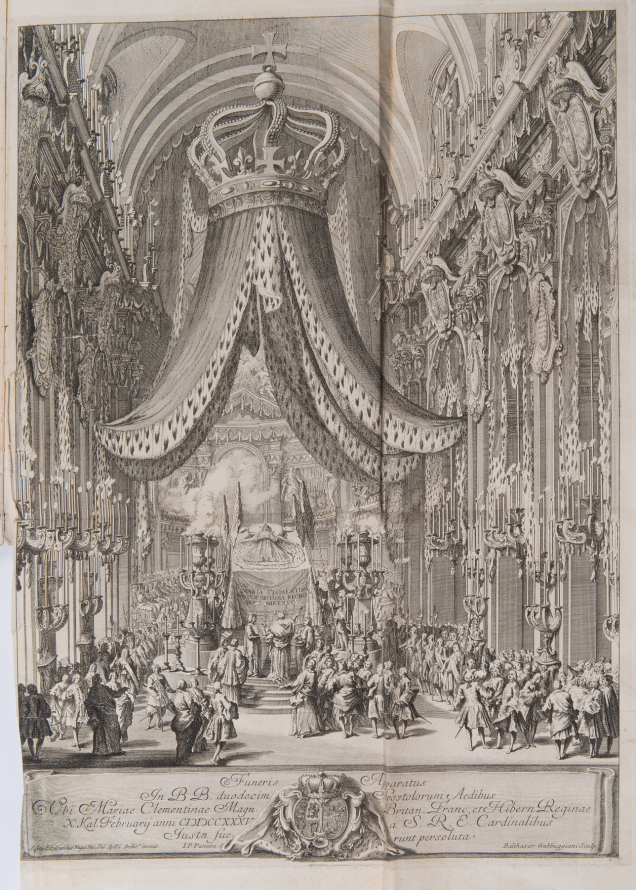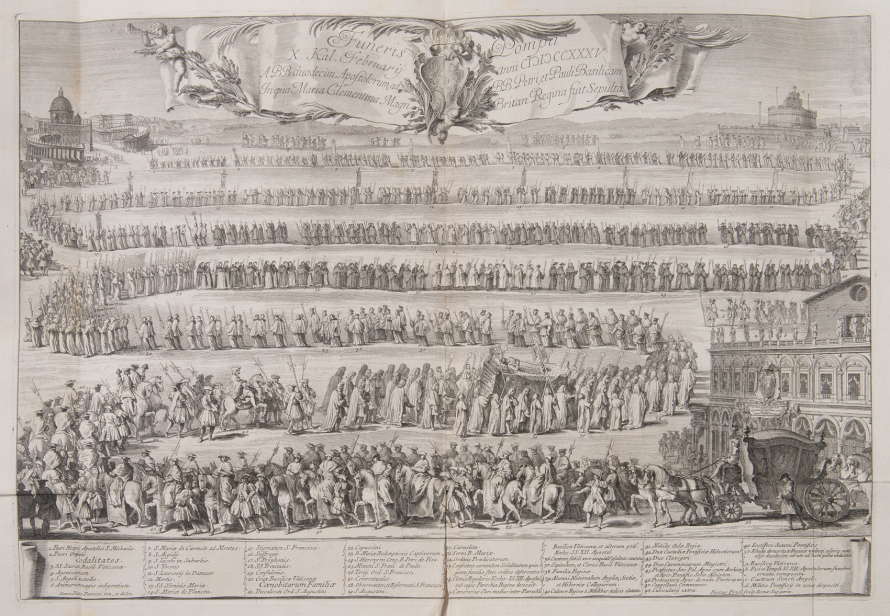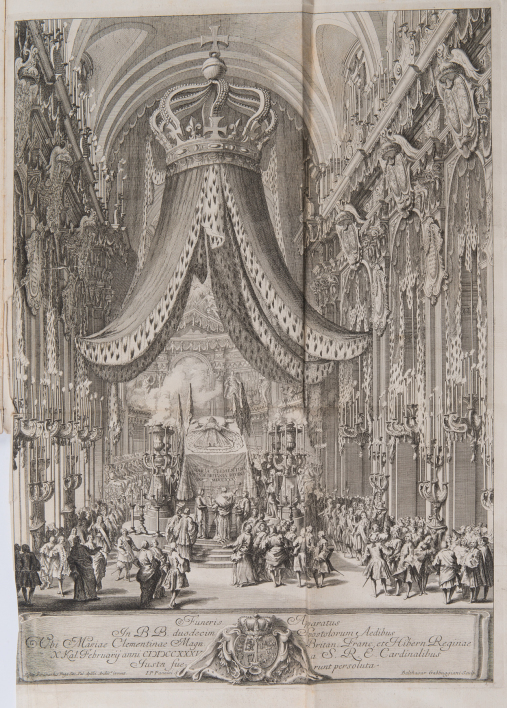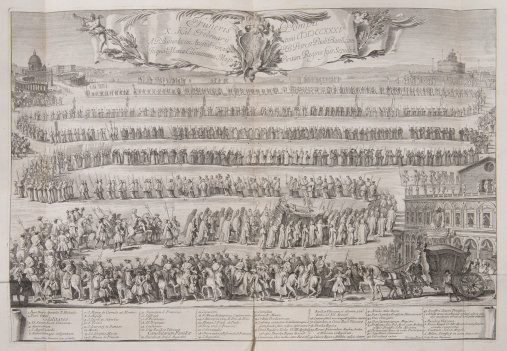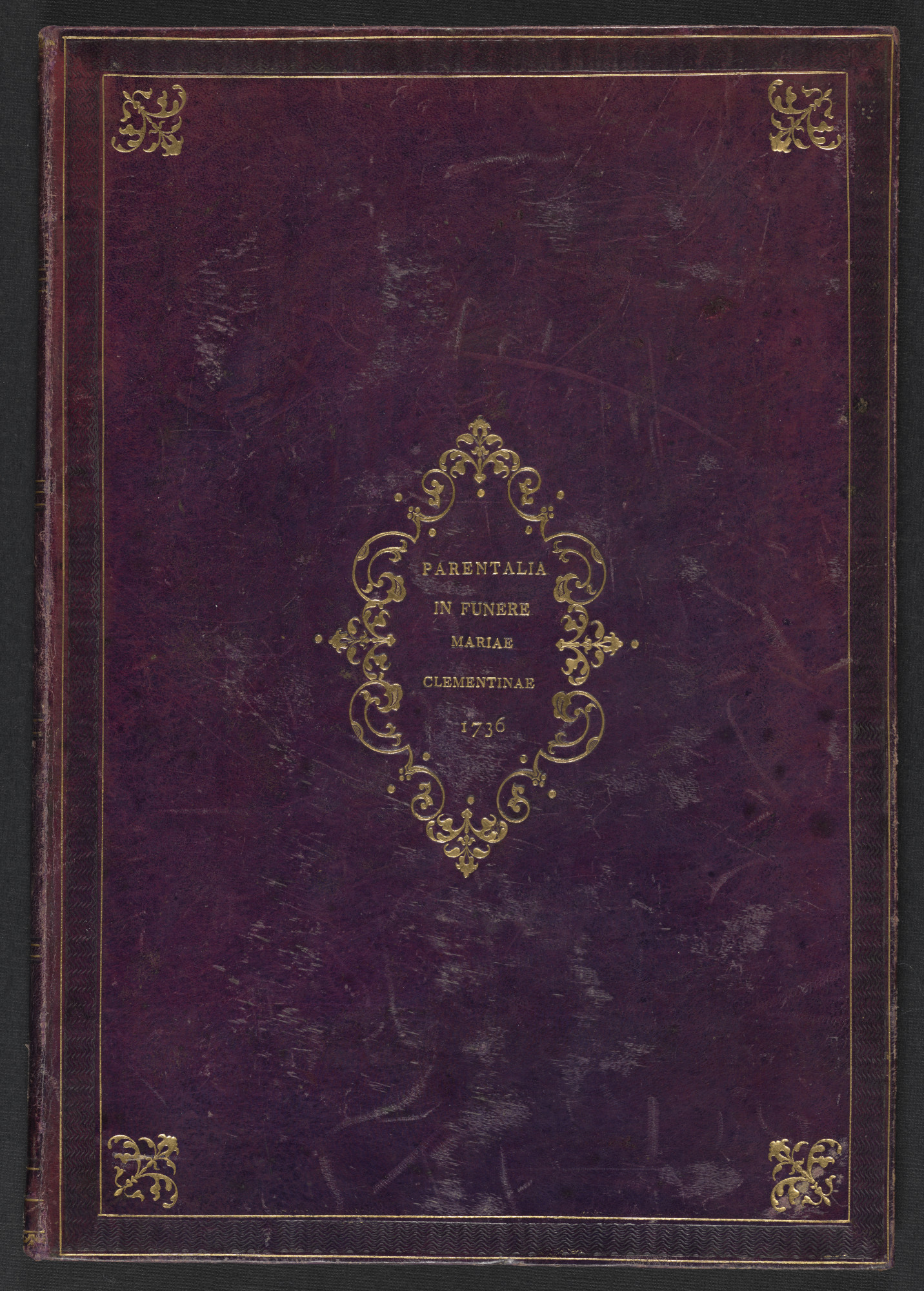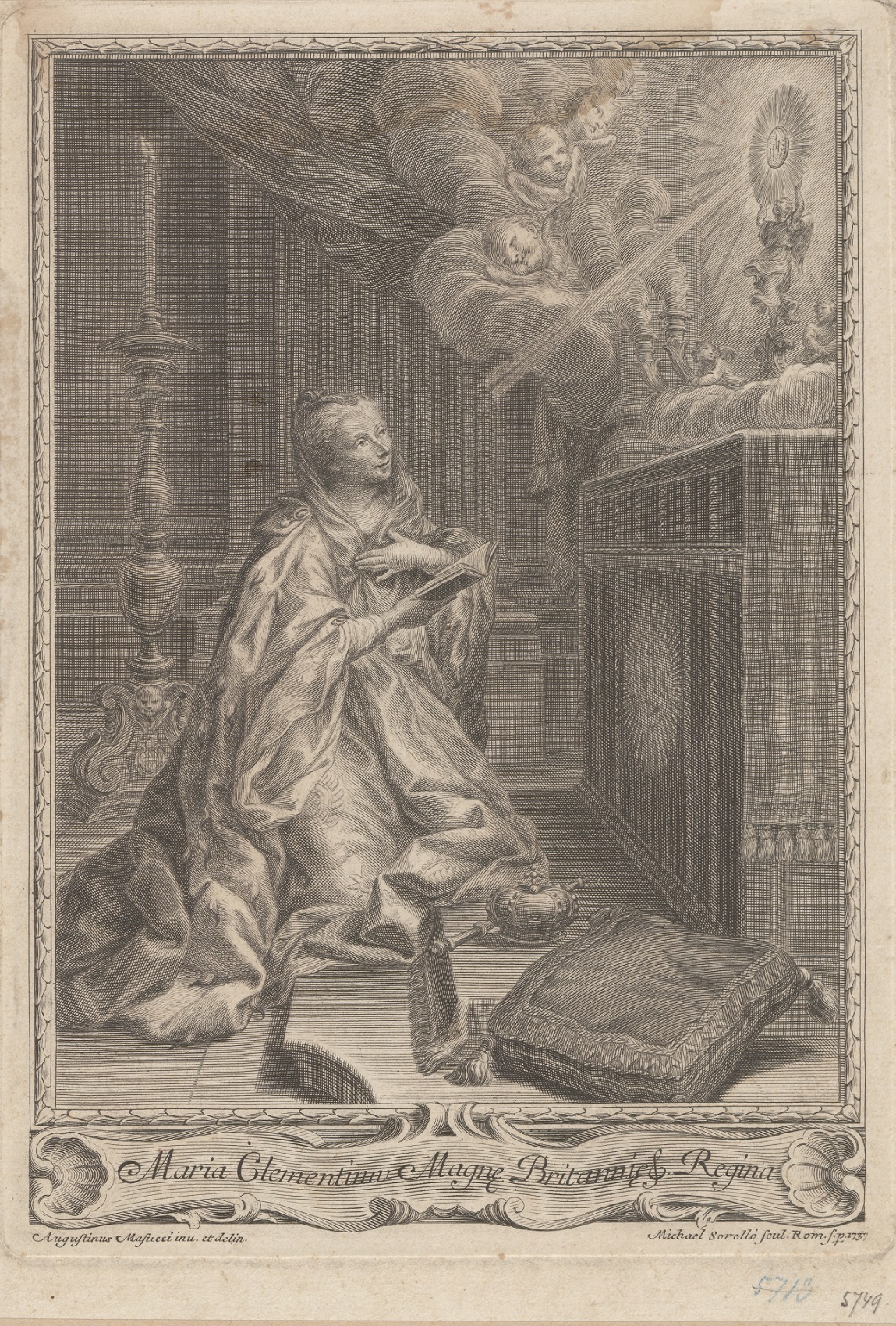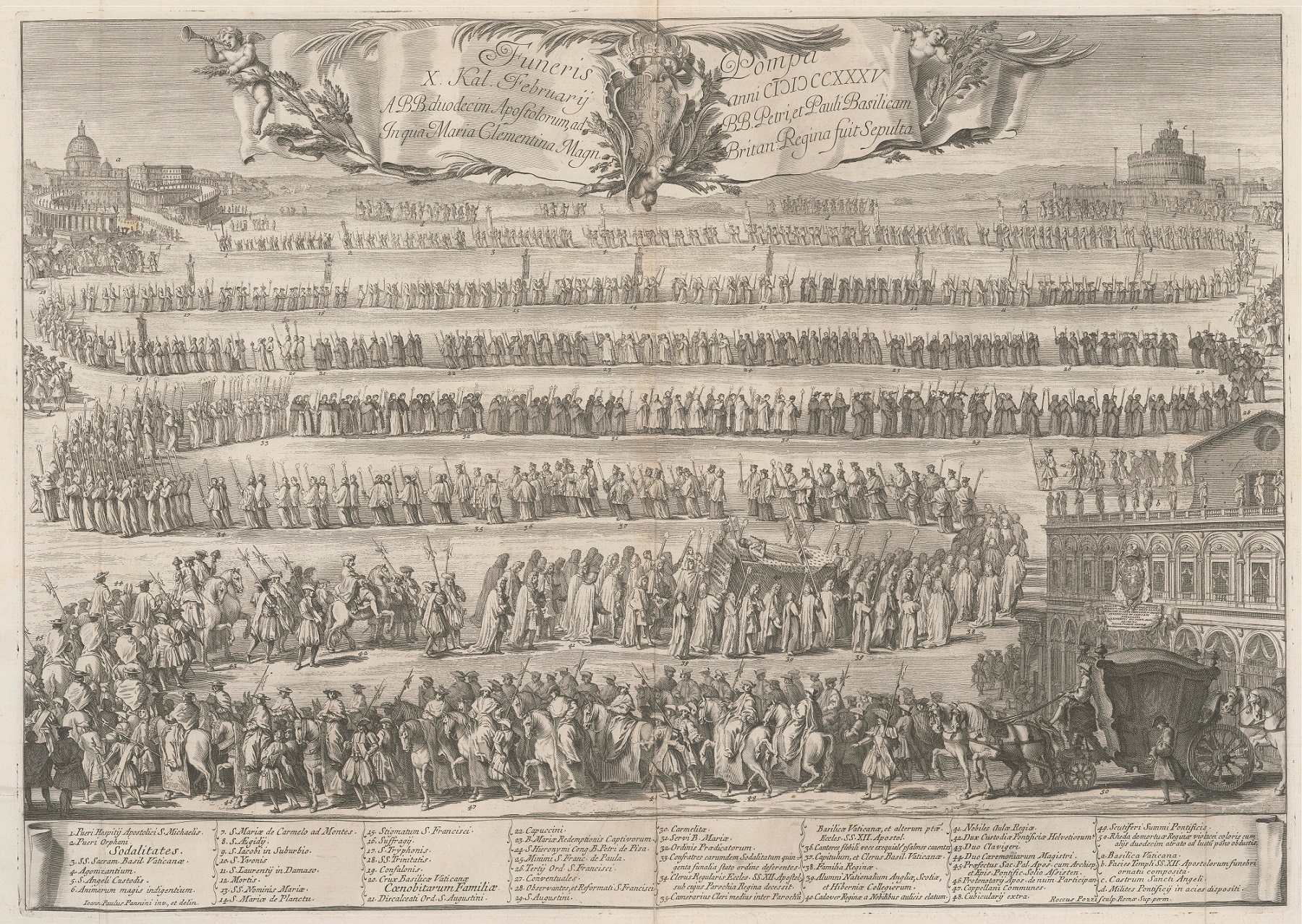The Sobieskis and Stuarts. Castrum doloris of Clementina Sobieska in the Basilica dei Santi XII Apostoli in Rome, Baldassare Gabbuggiani, 1736
The Sobieskis and Stuarts. Castrum doloris of Clementina Sobieska in the Basilica dei Santi XII Apostoli in Rome, Baldassare Gabbuggiani, 1736 - Photo gallery - Element slider
The Sobieskis and Stuarts. Castrum doloris of Clementina Sobieska in the Basilica dei Santi XII Apostoli in Rome, Baldassare Gabbuggiani, 1736 - Photo gallery - Element slider
Castrum doloris of Clementina Sobieska in the Basilica dei Santi XII Apostoli in Rome
engraved by Baldassare Gabbuggiani after a drawing by Giovanni-Paolo Pannini
copperplate on paper, 1736
Museum of King Jan III's Palace at Wilanów
The funeral of Clementina Sobieska,
engraved by Rocco Pozzi after a drawing by Giovanni-Paolo Pannini
etching on paper, 1736
Museum of King Jan III's Palace at Wilanów
In 1736, Giovanni Maria Salvioni’s publishing house in Rome released a bilingual print entitled Parentalia Mariae Clementinae Magn. Britan. Franc. et Hibern. Regin. Jussu Clementis XII Pont. Max, a memorial to Clementina, who died on January 18, 1735, containing her biography and a detailed description of the grand funeral ceremonies organised in Rome at the behest of Pope Clement XII.
The publication was illustrated with three engravings based on drawings by Roman landscape painter Giovanni Paolo Pannini (1691 or 1692–1765). The title page with the portrait of the queen was made in a copperplate etching by Giovanni Girolamo Frezza (1659–1741). The castrum doloris and the interior of the Basilica dei Santi Apostoli during the private funeral rites and burial were depicted by Baldassare Gabbuggiani (1689–after 1750). The engraving shows the interior of the church with the funeral procession at the catafalque reminiscent of a ceremonial bed. Mourning draperies adorned with ermine fur flow down from the canopy in the shape of a huge crown suspended above it; countless candles burn around it. The temple is filled with people, and on the catafalque, one can makes out the figure of the deceased in a crown and an outstretched ermine cloak, drawn in foreshortened perspective. This is an exceptionally accomplished example of the Baroque theatrum of impressive scale and grandeur, excellent organisation, and richness of style. The funeral decorations were designed by Ferdinando Fuga (1699–1781), an architect who designed sacred buildings and palaces, active in Rome and Naples at the time,.
Another illustration from the Parentalia Mariae Clementinae… was a depiction of the funeral procession of Clementina, which set off from the Santi Apostoli church to St. Peter’s Basilica, where the body of Jan III’s granddaughter was finally laid to rest. The procession winds its way through the streets, forming a total of seven parallel sections, situated in increasingly distant planes. Its head, in which one can make out tiny silhouettes of the participants, approaches St. Peter’s Square; the procession is closed by a carriage covered with black cloth, which is moving away from the façade of the Santi Apostoli. In the background, alumni of English, Scottish, and Irish national colleges hold burning torches as they surround the high bier with the body of the queen, dressed in royal (rather than monastic) robes. At the top of the composition floats a gently curled, wide ribbon with an inscription, separated in the middle by a Rococo cartouche topped with a crown, in which are five fields with the coats of arms of Poland. Clementina’s heart remained in a marble urn in her epitaph in the Santi Apostoli church. The engraving was made by the Roman artist Rocco Pozzi (d. c.1780). Below the composition is a legend with the description of the people who participated in the procession.
